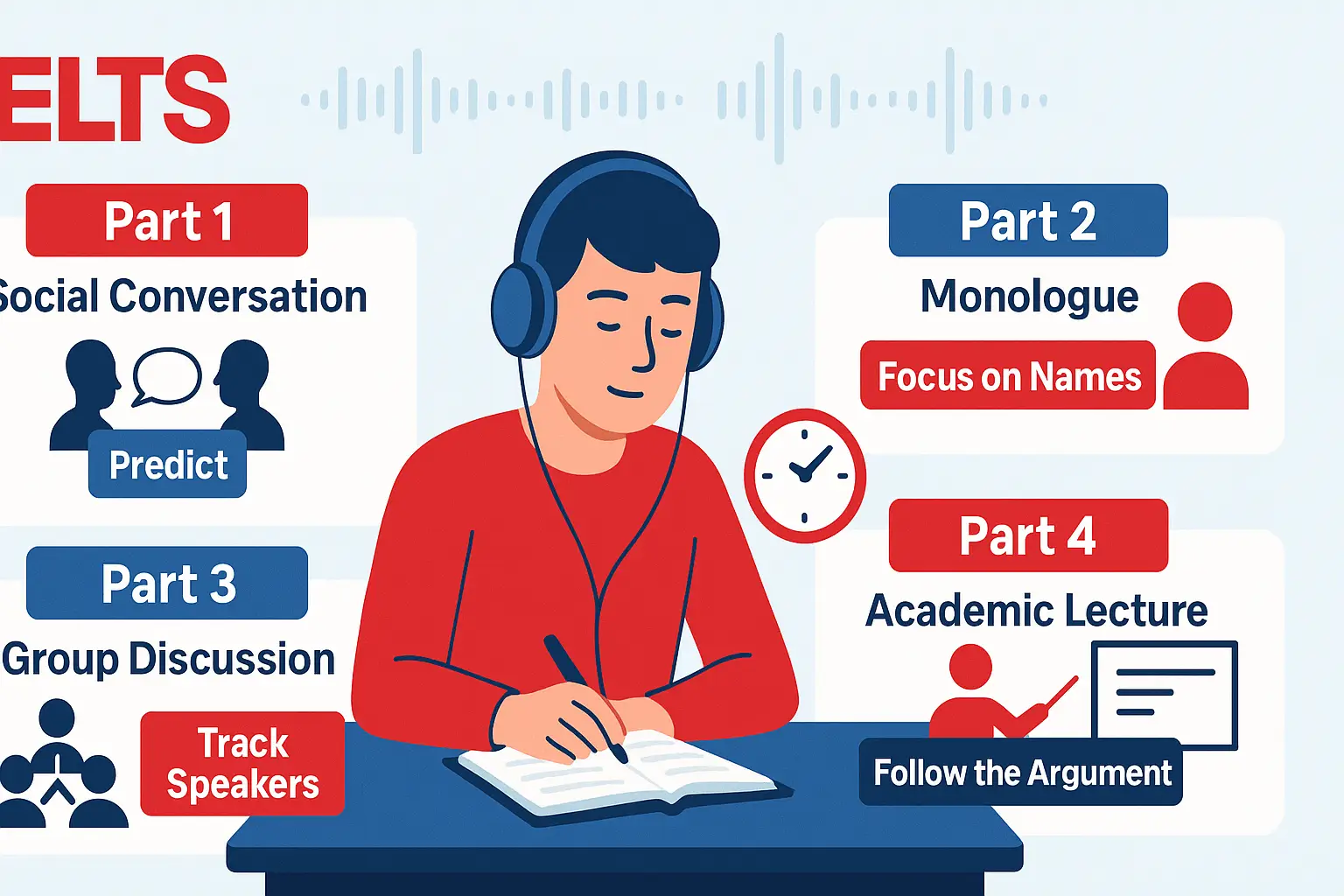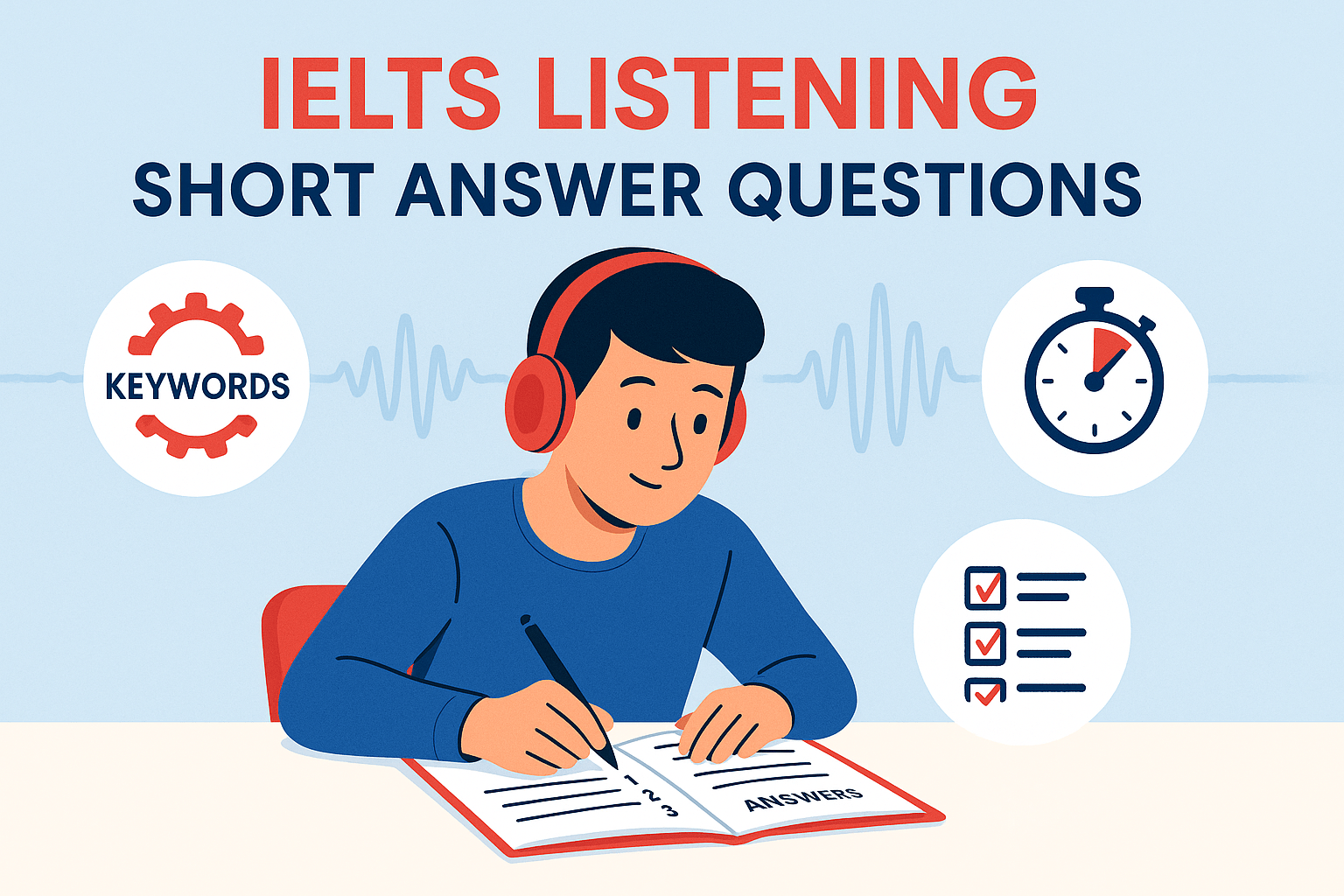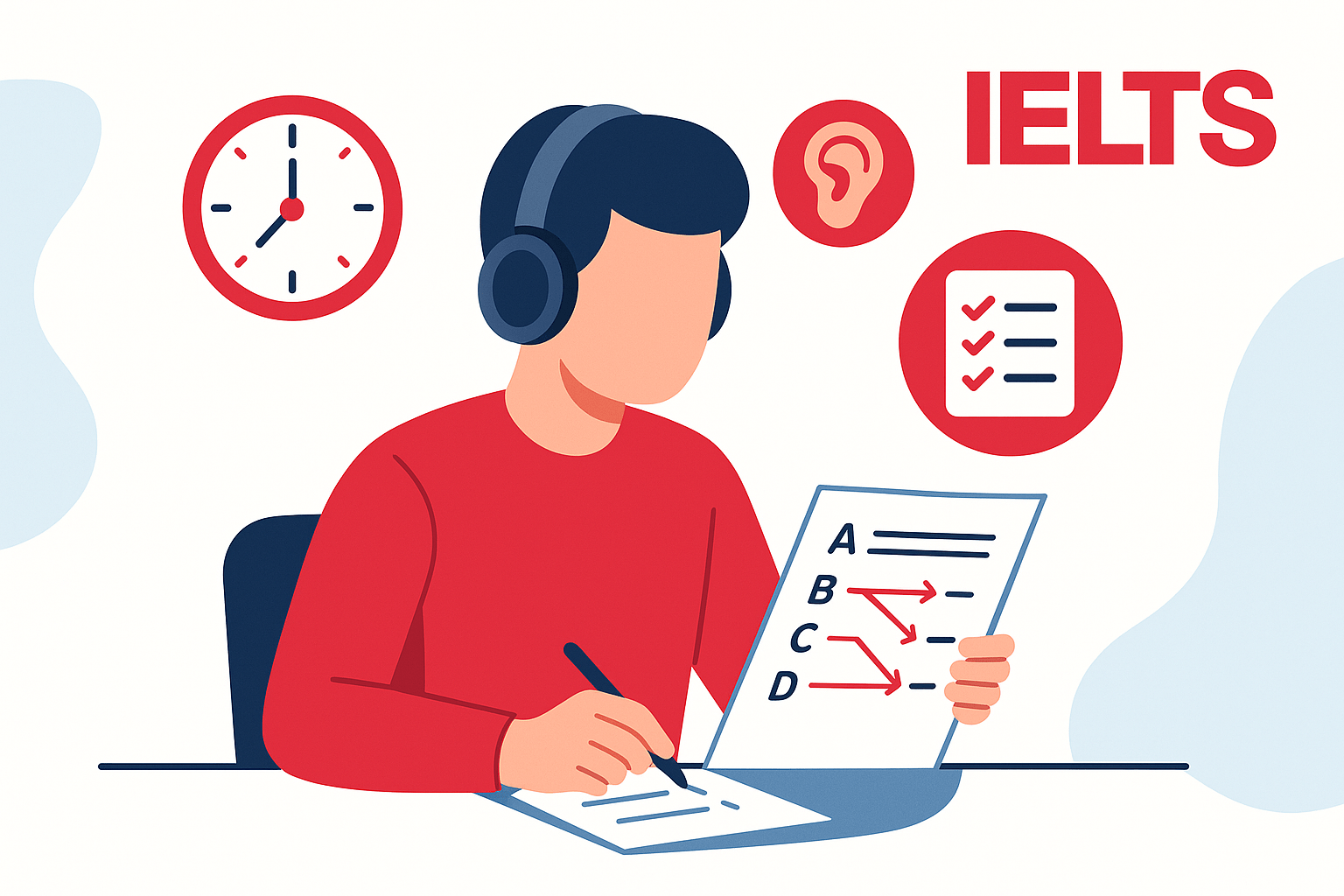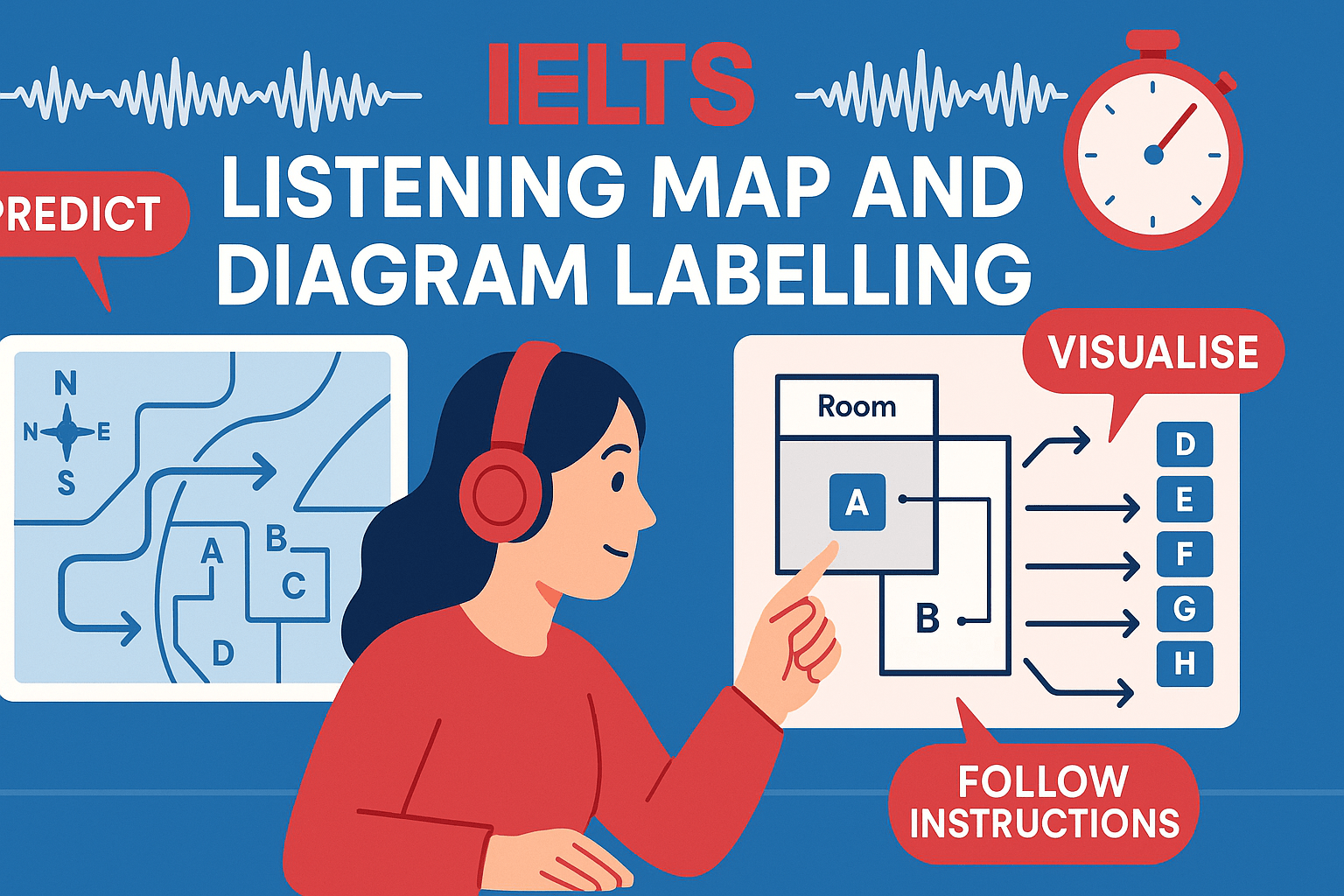- Why One Size Doesn’t Fit All in IELTS Listening
- Part 1: Social Conversation — Predict Before You Hear
- Part 2: Monologue — Focus on Names, Places, and Directions
- Part 3: Group Discussion — Track the Speakers
- Part 4: Academic Lecture — Follow the Argument, Not Just the Words
- Final Thoughts: Strategy Beats Stress
- FAQs: IELTS Listening Strategies for Parts 1–4
As an international IELTS teacher who has helped students from over 30 countries, I’ve seen one common mistake over and over again: students approach all four parts of the IELTS Listening test the same way. But here’s the truth I always tell my learners — each part of the test demands a unique approach. In this guide, I’ll walk you through proven IELTS Listening strategies for Parts 1 to 4 that have consistently helped my students boost their band scores, especially those aiming for Band 7–9.
Why One Size Doesn’t Fit All in IELTS Listening
Let me share a quick story. One of my students, Maria from Spain, was stuck at Band 6.5 in Listening. She had solid vocabulary and grammar, but her problem? She used the same passive listening technique across all four parts. Once she learned how to adapt her strategy to each section, she jumped to Band 8 in her next test. If she can do it, so can you.
IELTS Listening Strategies for Parts 1–4
To perform well in each part, you must first understand how they differ. Here are the strategies that I use with my students across the world.
Part 1: Social Conversation — Predict Before You Hear
This part is usually a conversation between two people in an everyday context, like booking a hotel or inquiring about a service.
Common student problem: Many learners miss out on details like phone numbers, prices, or addresses.
Pro Tip: Before the audio starts, scan the questions and predict the type of information (date? number? name?). Don’t just wait for the answer to appear. Use your time wisely.
This predictive skill is a core listening strategy, and I cover it deeply in my premium course here.
Part 2: Monologue — Focus on Names, Places, and Directions
Here, you’ll hear a single speaker talking about a public event, location or facility.
Student issue I often see: Students struggle with map labeling or miss details about locations.
Strategy: Pay extra attention to names, numbers, and directions. Often, the speaker will correct themselves or paraphrase — don’t get tricked!
You can see more on paraphrasing and active listening techniques in our IELTS Listening Strategies & Skills Guide.
Part 3: Group Discussion — Track the Speakers
This is the part that trips up even advanced learners. You’ll hear 2 or 3 people discussing academic topics or course work.
What I hear from my students: “I get lost in who is saying what!”
Solution: Practice identifying speaker voices and track their opinions. You may want to write initials (e.g., A, B, C) next to your notes.
Tip: Look out for agreement and disagreement language. This is a subtle but critical skill in Band 7–9 listening.
Part 4: Academic Lecture — Follow the Argument, Not Just the Words
This is the most difficult section — a single speaker delivering an academic talk. And unlike earlier parts, there are no pauses.
Common student frustration: “I miss one answer and panic, then miss the next few!”
How I fix this: Train your brain to follow the argument or logic, not just keywords. The lecture usually has a structure: introduction, main points, examples, conclusion. If you miss a word, stay calm and move on. Focus on the flow.
Our IELTS Listening Practice Tests are specifically designed to train this skill in real test conditions.
Final Thoughts: Strategy Beats Stress
IELTS Listening isn’t just about hearing — it’s about processing. If you use the same strategy in all four parts, you’re making the test harder than it needs to be. With the right IELTS Listening strategies tailored to each part, you’ll understand more, miss less, and score higher.
Whether you’re just starting or retaking the test, make sure you build a habit of strategic listening.
Want to explore more official resources?
Check out IELTS.org, British Council, and IDP IELTS for test formats and updates.
And when you’re ready to take your prep further, our full IELTS premium course catalogue is ready to help.
FAQs: IELTS Listening Strategies for Parts 1–4
Q1: Should I listen for keywords in all four parts?
No. While keywords help, they are only part of the strategy. For example, in Part 4, you need to follow the structure of the argument, not just wait for keywords.
Q2: How do I improve prediction skills for Part 1?
Use sample tests and pause before the audio to guess the answer type. Over time, your brain will adapt. Try this in our free practice section.
Q3: Is it okay to miss an answer?
Yes. Missing one doesn’t mean missing all. Stay calm, and quickly shift your focus to the next question.
Q4: Can I write on the question paper?
Absolutely. Use the paper to track speakers, underline keywords, or write initials. Just remember to transfer your answers at the end.
Q5: Are there strategies to speed up my progress?
Yes — targeted practice, feedback, and mock tests make a huge difference. My students who use IELTS Listening Strategies see major improvements in 2–4 weeks.
Stay strategic. Stay sharp. And keep listening with purpose.




